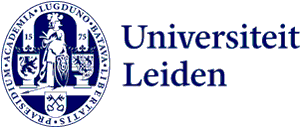
Using a camera to look into a book's spine: ‘You might just find that one rare text’
What do you do if you have a book from the sixteenth or seventeenth century, but you suspect that the binding contains a fragment of a medieval manuscript? University lecturer Thijs Porck has received an NWO grant to experiment with a camera attached to a tube. 'The project boils down to keyhole surgeries on old books,' he says.
'Take a look,' says Porck, pointing to the bound book in front of him. 'If you open a book in front of you, some space will naturally appear between the binding and the bookblock. Into that space, you can insert an endoscopic camera.' With this kind of camera, you can get a good picture of the early modern binding technique as well the medieval parchment that was used to reinforce it centuries ago. And that is useful, because with a bit of luck, you might find a previously unknown medieval text on those fragments of parchment.
'Parchment was quite expensive in the sixteenth and seventeenth centuries,' Porck explains, ‘so old manuscripts were cut into pieces and reused to bind books.' Books that were deemed too Catholic, illegible or simply no longer interesting were all reused as binding material. 'As a medievalist, I naturally find that an incredible shame,' says Porck. 'Sometimes, you think: just open up all those early modern bindings and reveal those medieval manuscripts again, but of course that’s impossible and would be a waste!'

Plumbing work
With a camera attached to a tube, he hopes to have found a more subtle way of recovering the medieval manuscripts that were reused in the bindings of early modern books. 'Some years ago, methods for this were devised using X-ray equipment, for example, but those methods are complex and expensive. Then I thought: if you use a tube with a camera, like a plumber does to look at a blocked pipe, you might already see a lot.'
The big advantage of Porck's method is that it does not require a laboratory set-up. 'I did an experiment with a twenty-euro camera, and even with that I could already get a good look. With the grant I have now received, I can buy a much better camera. I'm going to practise with that until we have a protocol for making recordings without damaging the early modern book bindings. Then we can go to an archive to really look inside sixteenth- and seventeenth-century books.'
New finds
Porck expects to make new finds there. 'For a very long time, scholars only looked at complete manuscripts, but for the past ten years or so more attention has been paid to fragments. These sometimes include texts that have been in a binding for 500 years and have not been looked at in all that time! Of course there is a chance that we will only find Bible texts - of which we already have a thousand fragments - but you might just find a piece of a text that has been missing for centuries, like the Madocke...' Porck himself would love to discover a piece of Old English. 'With my specialism, that would be the ultimate find. And pieces of Old English have been discovered in the Netherlands before, so it could be possible; perhaps a new fragment of Beowulf or the missing line of an early medieval heroic poem.'
